As an edible wild herb, sorrel not only impresses with its sour, fresh taste, but is also popular with caterpillars.

The sorrel is native to Central Europe and can be used as a medicinal herb. You can find out how to care for this versatile plant and how to use sorrel here. We also present the most important species and varieties and show how sorrel can be propagated.
contents
- Recognize sorrel: leaves, flowers and properties
- The most beautiful sorrel species and varieties
- Planting sorrel: location and sowing
-
Proper sorrel care
- Water, cut and fertilize
- Common pests on sorrel
- Multiplication
- Is sorrel hardy?
- Fighting sorrel: how to get rid of it
- Is Sorrel Poisonous or Edible?
- Harvesting and using sorrel
Recognize sorrel: leaves, flowers and properties
The sorrel belongs to the genus of dock (Rumex) in the knotweed family (Polygonaceae). When one speaks of sorrel, it is usually the meadow sorrel (Rumex acetosa
) meant. However, there are other species of sorrel, which are presented in the next section. The herbaceous plant is also known as Sauerlump or Suurampfere and can be up to 100 cm tall. The arrow-shaped leaves, which can also be eaten, are typical. As the name suggests, they taste slightly sour. The leaves, which sit further down the stem, are less arrow-shaped and more elongated. The sorrel has flowering time from May to August and presents its rather inconspicuous, small and red flowers. The perennial shrub forms flowers again every year, which is why the sorrel is called perennial. The sorrel can be found all over the world, although it was naturalized in America as a neophyte.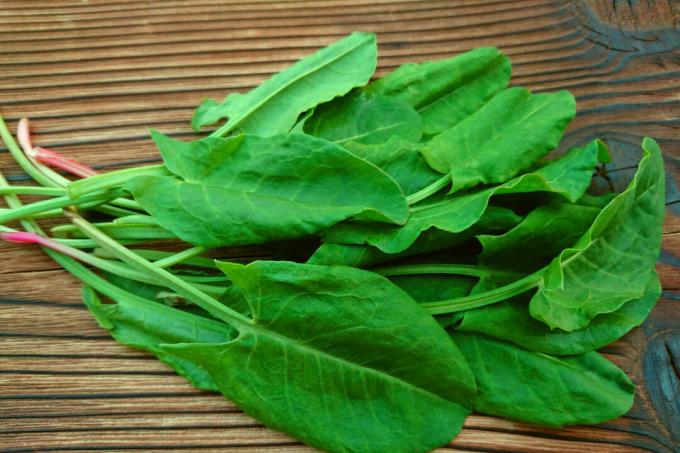
Confusion of sorrel: There are some plants you can confuse the sorrel with. These include above all other species of dock, which is not tragic. In addition, the sorrel leaves look like those of the spotted arum (Arum maculatum) similar. Just before flowering, when only the leaves are there, you should take a close look at the plant. However, if you look closely, the poisonous arum has rounded arrow ends at the lower end of the leaf. You can recognize sorrel by the fact that the leaves are pointed at this point. In addition, the arum flowers earlier and already shows its piston-shaped inflorescence in April and May.
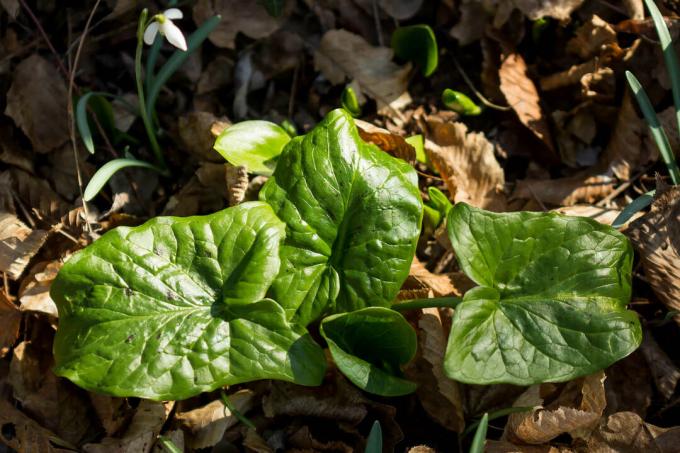
The most beautiful sorrel species and varieties
In addition to the meadow sorrel, also known as the great sorrel, there are a few other types of dock that have a sour taste and are suitable for consumption.
- Little sorrel (Rumex acetosella): As the name suggests, this dock is not as high as the meadow sorrel: only about 40 cm tall. The leaves are also smaller and have conspicuous spike ends at the bottom.
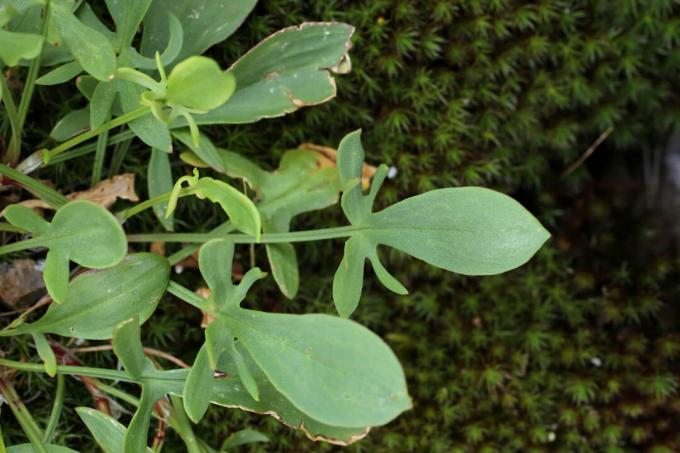
- Vegetable picker (Rumex patientia): The vegetable picker tastes less sour and has a similar taste to spinach. It is originally from Asia and Eastern Europe.
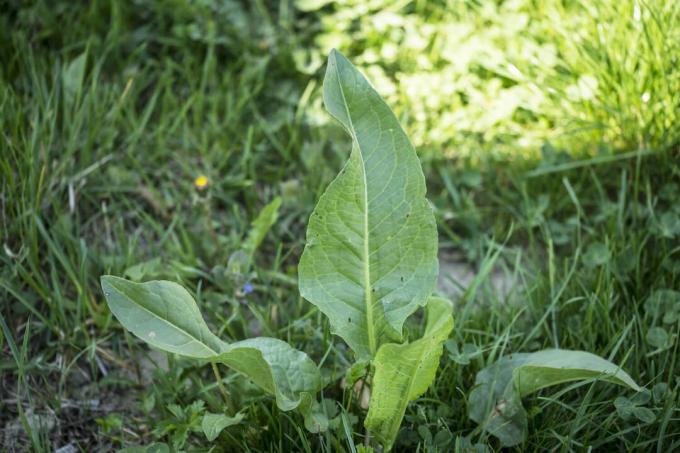
- Blood vessel (Rumex sanguineus): With its red veined leaves it is Blood vessel, which is also called red sorrel, a real eye-catcher in the garden. Its leaves are milder in taste than those of meadow sorrel.
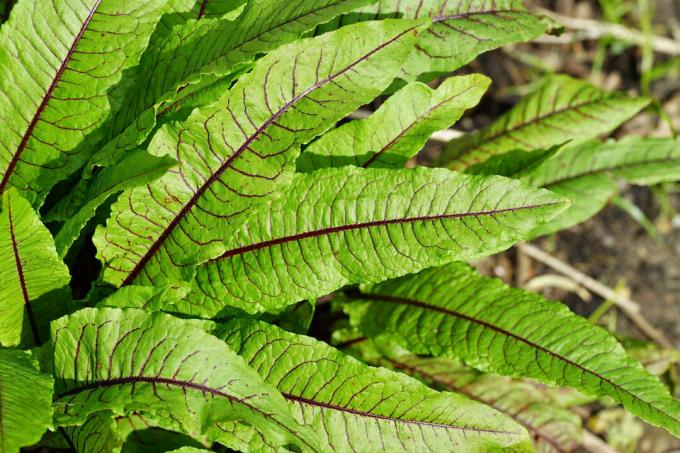
- Common sorrel (Rumex rugosus): This species grows up to 120 cm and is a cultivated plant. The leaves are a bit thicker and larger than at Rumex acetosa.
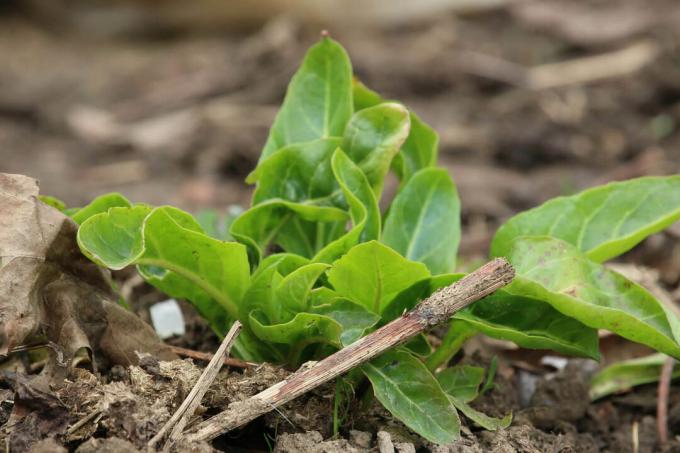
Planting sorrel: location and sowing
When planting the sorrel, the place should meet some conditions. The sorrel prefers a sunny location and takes root in moist, deep, acidic and nutrient-rich soil.
From April you can sow the sorrel directly in the garden. Optionally, it can be brought forward in the house from March. Since it is a Light germs you should only press the seeds lightly and not cover them with soil. Temperatures of around 15 ° C are ideal for germination. It is best to use potting soil for sowing, later the small plants should then be planted in nutrient-rich soil with a low pH value. For example, ours is suitable for this Plantura Bio-Acid Soilwhich offers the sorrel with its pH value between 4 and 6 optimal conditions. Our organic soil is also produced with reduced peat and can be used both in the bed and in the pot.
We recommend planting in a tub or raised bed. Sorrel can spread through runners and can hardly be removed due to its deep roots. If you want to sow it in the bed, keep a distance of about 40 cm between the plants, as the sorrel grows quite bushy.
The sorrel has a high need for nutrients. Because it is also used for consumption, it is best to use an organic fertilizer, such as ours Plantura organic universal fertilizer, be used. It contains all the important nutrients that plants need to grow and provides the sorrel with nutrients over a long period of time. These are gradually released in the soil so that there is no excess nutrient. Especially in raised beds or in pots, nutrients have to be replenished regularly through fertilization.
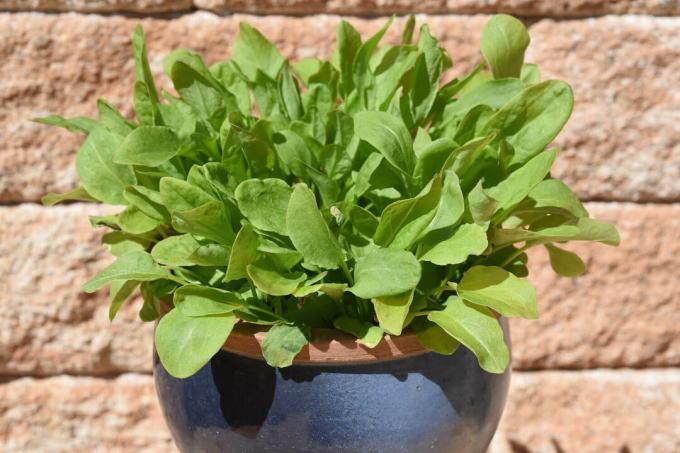
tip: You can also plant the sorrel in partial shade, then the plant remains a little smaller and the leaves taste milder.
Can you plant sorrel in a pot?
Keeping sorrel in a pot is not only possible, it is even recommended - for example, to plant it on the balcony. Since it develops roots up to 150 cm long, the pot has to be quite large. Also a larger plant box or one Raised bed offer themselves. The planter does best with an acidic and nutrient-rich soil like ours Plantura Bio-Acid Soil filled to meet sorrel's needs.
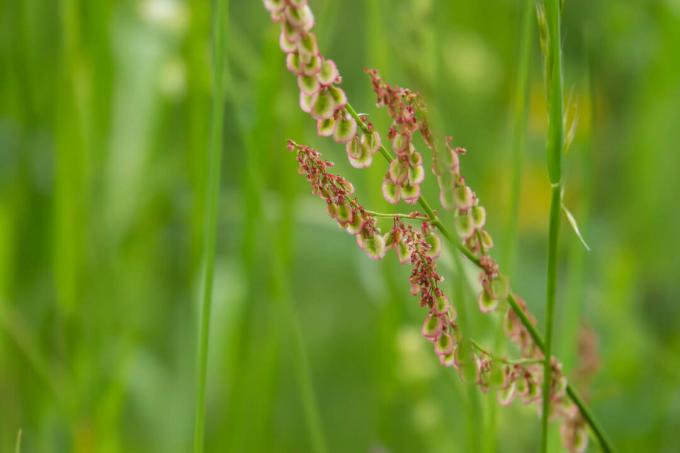
Proper sorrel care
Apart from the regular use of water and fertilizer, the sorrel hardly needs any maintenance. We'll show you briefly what is important.
Water, cut and fertilize
Since it prefers moist soil, it is important to water the sorrel when it does not rain regularly. Especially in summer it needs enough water to grow well. Rainwater is ideal because of its low lime content.
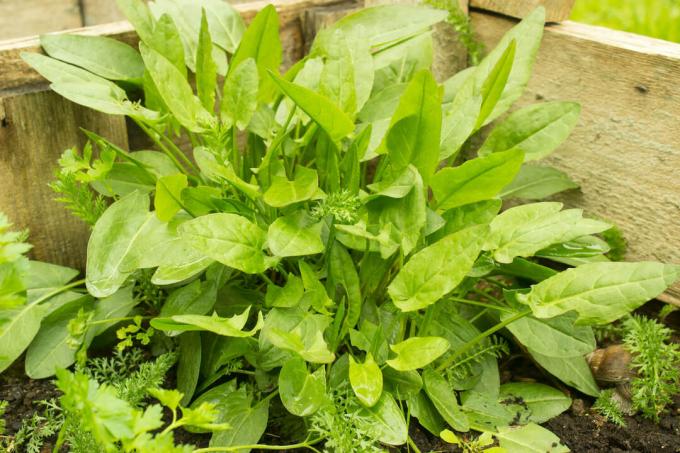
For a richer harvest, you can remove the flower base. This leaves more energy for the formation of fresh leaves. However, bees and other insects also benefit from sorrel flowers. Cut the dock back about three times a year so that it sprouts fresh again. Leave the young leaves in the middle.
Sorrel has a high need for nutrients and should therefore be fertilized regularly. A slow release fertilizer such as ours can be used for this once a year Plantura organic universal fertilizer be used. It is simply worked lightly into the ground and then lasts a long time. If you prefer to use a liquid fertilizer, you should mix a little fertilizer into the irrigation water once a month. Here, for example, is ours Plantura organic flower fertilizer which contains many important nutrients for a bountiful harvest.
Common pests on sorrel
Although it is actually a robust plant, it can happen that the sorrel becomes infested with pests. These are the most common diseases and pests:
- Leaf spot disease (Cercospora beticola): This disease caused by a fungus can be recognized by the brown and black spots on the leaves. Infested leaves should be cut off and the plant transplanted to another location. Because the perennial organs can remain in the ground for a year, no dock or beetroot (Beta vulgaris) and no Swiss chard (Beta vulgaris sbsp. vulgaris) are planted.
- Green sorrel beetle (Gastrophysa viridula): This beetle eats holes in sorrel leaves. The beetles should be collected regularly. The orange eggs on the underside of the leaf are also removed.
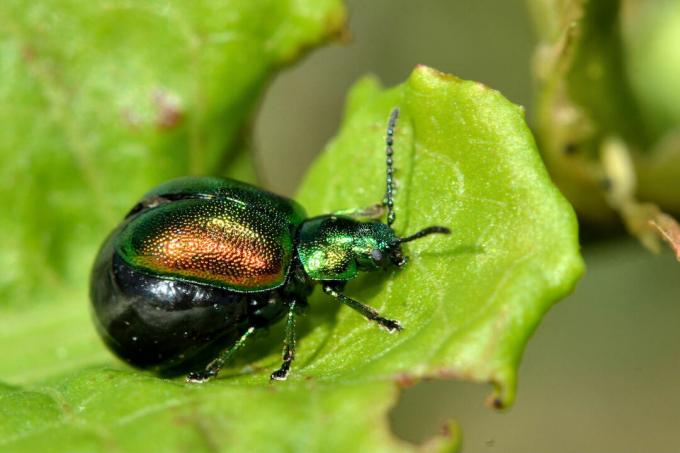
Multiplication
First of all, the sorrel can reproduce very well by itself. It can spread quickly in the garden through vegetative reproduction as well as through self-sowing. You can also collect the fruit yourself and sow the sorrel seeds as described above. The fruits ripen between June and August and should be harvested before they open on their own. You can also use the offshoots to multiply the sorrel. Sorrel spreads strongly vegetatively, so you can simply dig up, cut and transplant the daughter plants. This is not always easy as the sorrel develops deep roots. If the roots are damaged, even more offshoots are usually formed.
Is sorrel hardy?
Sorrel is hardy and does not require any special protection. As a perennial perennial, it sprouts from its strong roots every year.
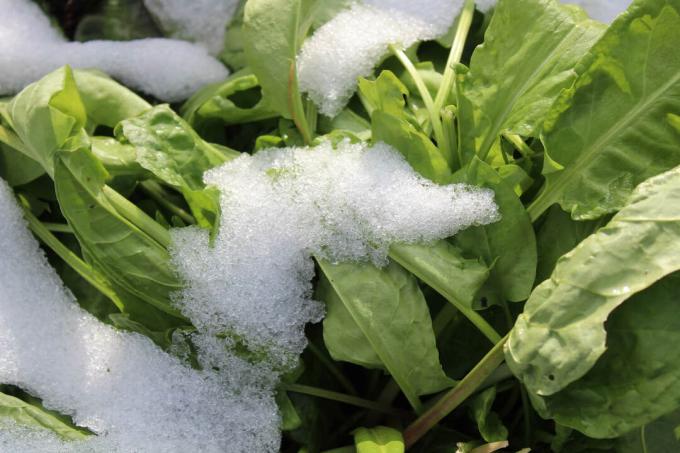
Fighting sorrel: how to get rid of it
Sorrel is a native wild plant and has tasty leaves. It also serves as a forage plant for the caterpillars of some butterflies. If you still want to remove it from the garden, you should note that this could be a difficult undertaking due to the roots. Remove the inflorescences regularly so that the dock cannot spread any further. In addition, dig up all the disturbing plants along with their roots.

Is Sorrel Poisonous or Edible?
Sorrel is a wild edible plant and can be used in a similar way to spinach. It is even used as a medicinal herb for stomach problems. However, it contains oxalic acid, the content of which increases with the age of the leaves. Leaves that turn red already have a high content of oxalic acid and should no longer be harvested. Sorrel is toxic to children in large quantities and can cause vomiting and diarrhea. Excessive amounts of oxalic acid are a burden on the kidneys. Pregnant and breastfeeding women in particular should therefore make sure not to consume too large amounts of sorrel in order to protect their child. People with kidney problems should rather refrain from consuming it. Sorrel is not a problem for pets as long as it is not consumed in large quantities.

Harvesting and using sorrel
The sorrel harvest should be done before the end of June, otherwise there will be too much oxalic acid in the leaves. Young and fresh leaves are usually the mildest and most digestible and can be harvested continuously. You can prepare the leaves raw or steamed, the sorrel behaves similarly to spinach and gives the food a sour, bitter note. Sorrel is also an integral part of the famous Frankfurt green sauce. However, it also tastes great in wild herb salad, in herb butter or quark, or as the main actor in Russian sorrel soup with potatoes and eggs.
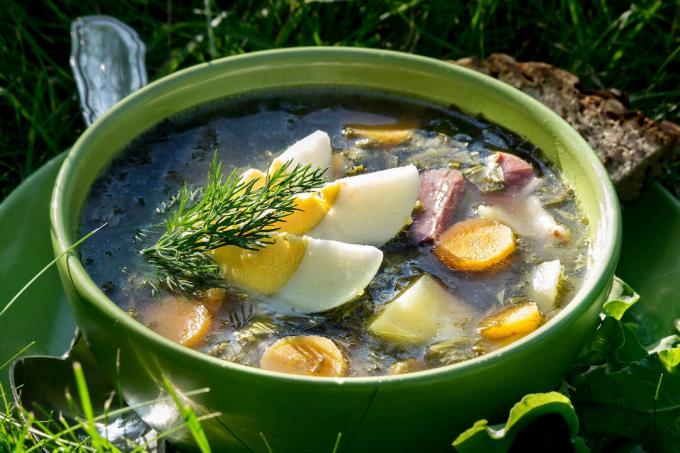
Is Sorrel Healthy?
Since it contains a lot of vitamin C in addition to oxalic acid, sorrel is considered healthy and digestible. It is even said to be healing for stomach ailments. The bitter substances contained stimulate digestion. In addition, it is considered to purify the blood and should generally promote vitality. The vitamins B1, B2, B6 and vitamin E are also contained in sorrel.
It is also slightly sour in taste and very healthy Lemon verbena. We show how to plant, care for and use them.
